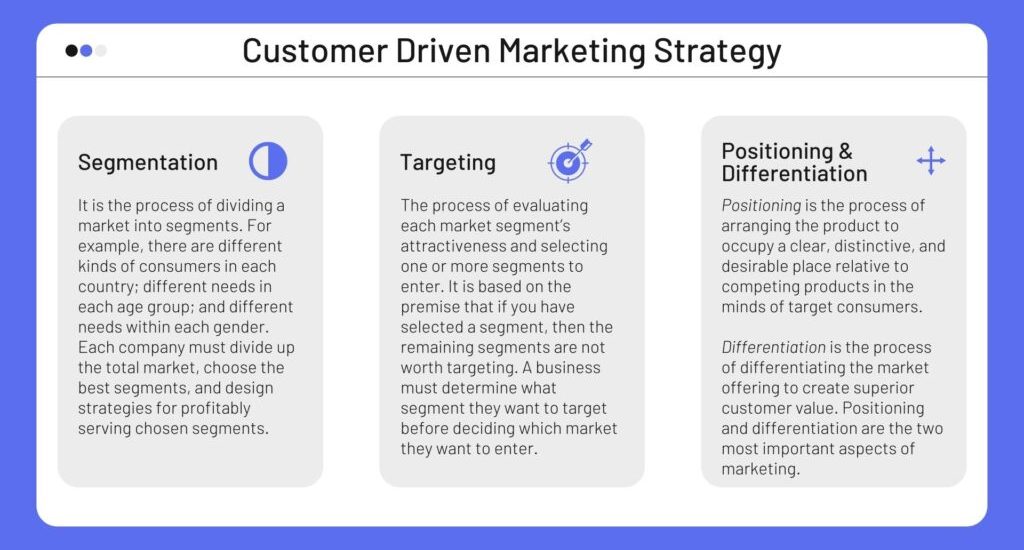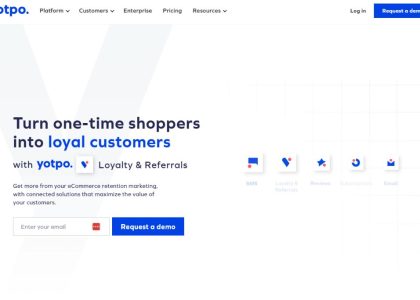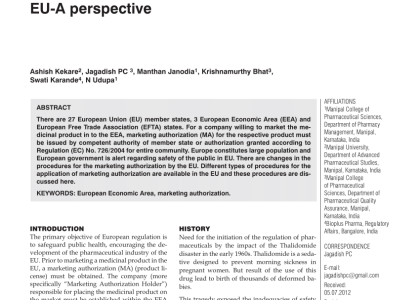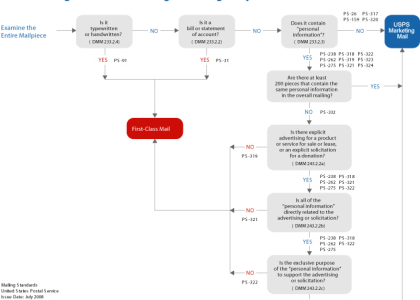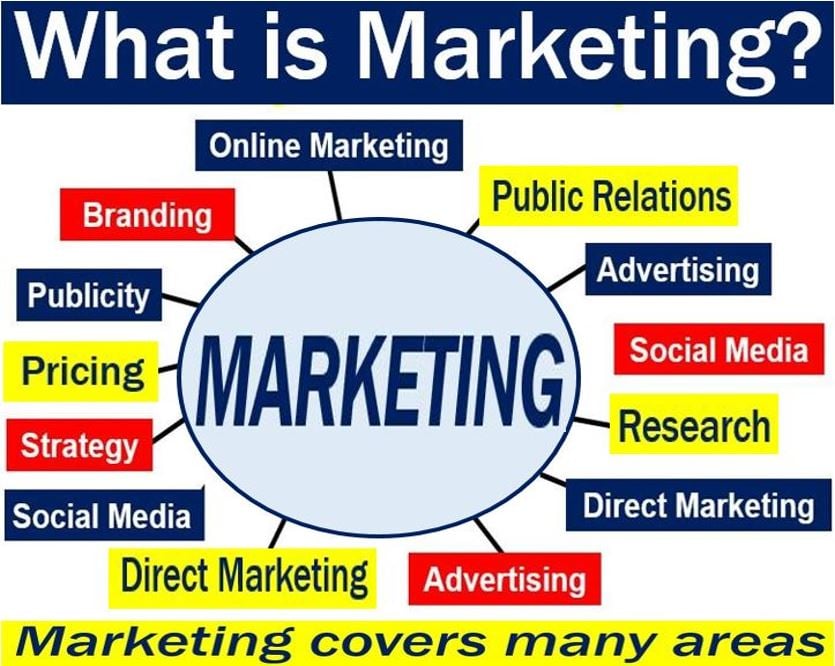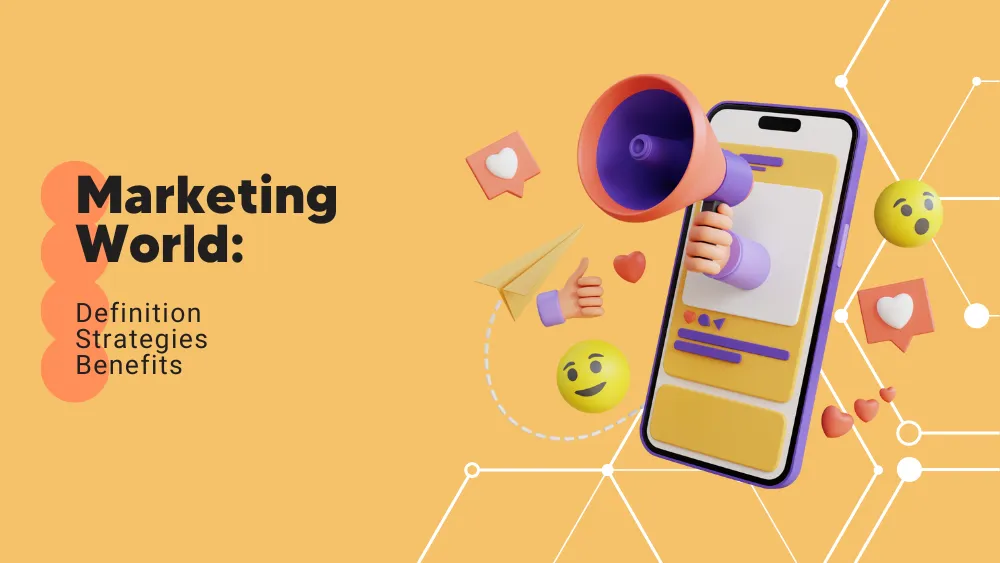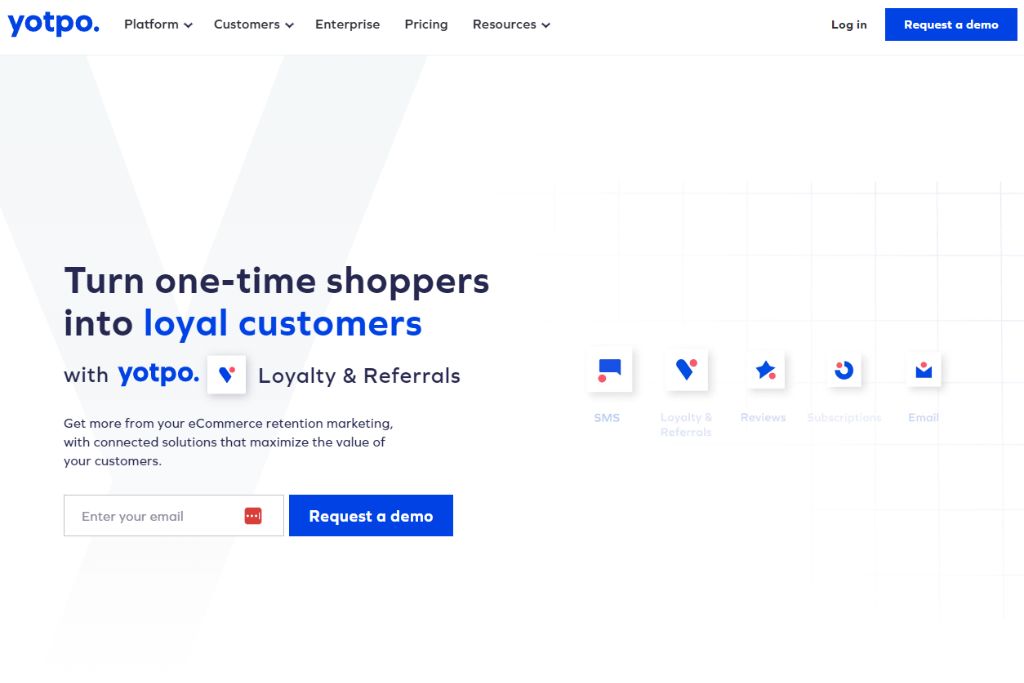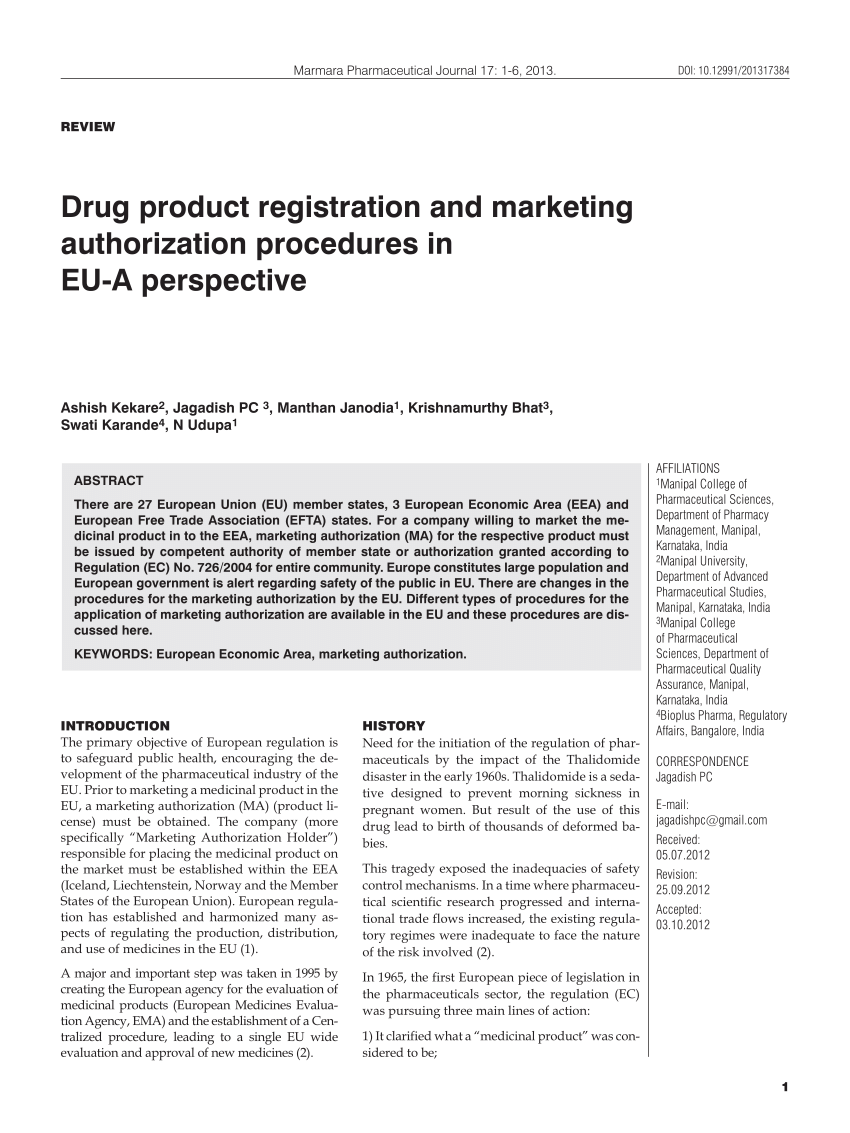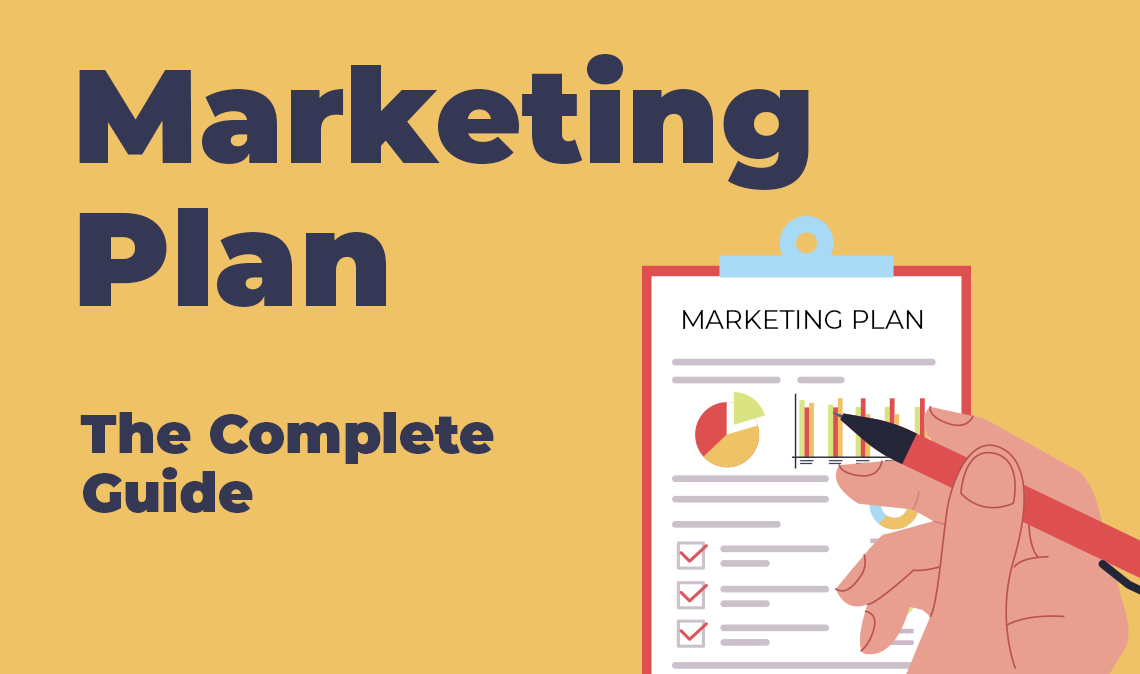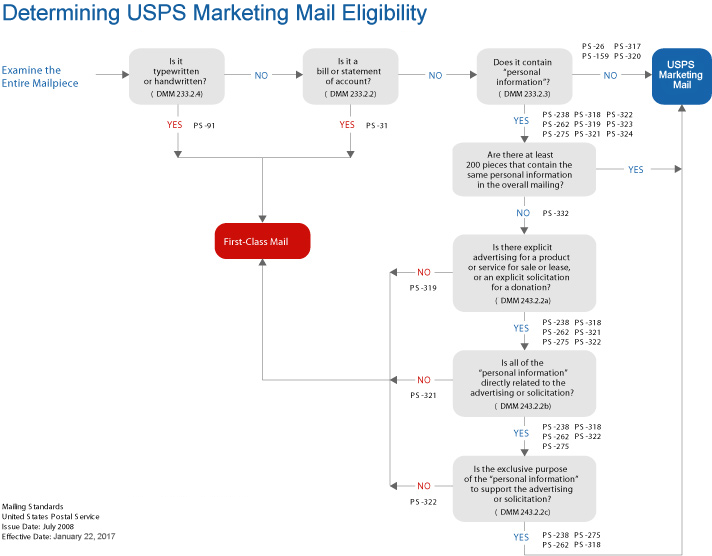The vast domain of marketing is characterized by constant evolutions and adaptations, making it crucial for businesses to stay updated with these changes. One such critical aspect of modern marketing is consumer-centric marketing. This article aims to delve into this marketing philosophy by elaborating on its essence, exploring the different methodologies used, and illuminating its real-world applications.
In the ever-progressing global business landscape, it has become more important than ever to understand and cater to a customer’s needs and expectations. The phenomenon of customer-oriented marketing has arisen from this very necessity, suggesting a shift from traditional marketing practices that focused on the product to contemporary practices that center around the consumer.
The following sections will build upon the fundamental principles of consumer-centric marketing, illuminating various strategies designed to attract, engage and retain customers. Additionally, this article will provide tangible examples of successful applications of these strategies, highlighting the potential and importance of embracing a consumer-centric approach in today’s competitive marketplace.
This comprehensive guide aims to offer businesses an understanding of consumer-oriented marketing, empowering them to employ these practices effectively. Exploring the potential of customer centricity, businesses can better craft their marketing strategies, fostering strong, long-lasting relationships with their customers, thereby driving growth and quality engagement.
A Close Look at Consumer Marketing: An Explained Definition
Consumer marketing is a comprehensive concept that refers to all the strategies, methods, and tactics employed by businesses to stimulate demand and interest in their products or services among end users. These are the individuals who buy goods and services for personal consumption, not for resale or for business purposes.
The core idea of this type of marketing is to understand the behaviors, needs, and motivation of the consumers to create engaging and effective marketing campaigns. The ultimate goal: to stimulate sales growth and foster brand loyalty.
Diving Deeper into the Concept
Consumer marketing can harness various channels — digital media, print, TV, radio, and even direct mail — for reaching potential consumers. It is often directed towards large demographic groups, segmented by age, gender, location, or socioeconomic status.
Strategically, it is all about answering the fundamental question: “what does the consumer need?” To answer this question, businesses use tools to analyze consumer behavior, market trends, competitor strategies, and cultural, societal, or personal factors that influence buying decisions.
A critical aspect of this form of marketing is the creation of a “unique selling proposition” (USP). The USP is a factor that differentiates a product from its competitors, such as the lowest cost, the highest quality, or a feature that is unique or rare. The USP stimulates consumers’ interest and persuades them to switch brands or try a new product.
In a nutshell, the underlying premise of consumer marketing is to add value to the consumer’s buying experience, ensuring they return to the brand or product time and again, creating a lasting and profitable relationship.
The Essential Role of Consumer Marketing in the Modern Corporate Landscape
In today’s competitive business ecosystem, the relevance and impact of consumer marketing cannot be overstated. Innovative customer marketing strategies are now at the core of successful business models, with an increasing emphasis on understanding and responding to customer needs and preferences.
Consumer-Oriented Marketing: A Key Business Imperative
Businesses that effectively leverage the power of consumer marketing to connect with their clientele stand to gain substantial advantages. This inextricably binds the company’s offerings to the evolving tastes, needs, and lifestyles of their customers. The outcome of these strategies is the production of goods or services that are not only tailored to the customer’s unique needs, but also foster loyalty and long-term customer relationships.
The Dawn of Data-Driven Consumer Marketing
The digital revolution has transformed the face of marketing, ushering in an era of data-driven consumer marketing. Technological advancements have made it possible for businesses to analyze vast quantities of data on consumer behavior to pinpoint their preferences. These insights aid in designing more precise and effective marketing campaigns, thereby optimizing business profitability.
- Enduring customer relationships: Effective consumer marketing strategies foster enduring relationships with customers by continually engaging them and accommodating their changing needs and aspirations.
- The power of personalization: Thanks to technological advancements, businesses can now personalize their marketing messages, products, and services to appeal to individual customers. This level of personalization goes a long way in enhancing customer satisfaction and loyalty.
- Brand perception and reputation: By aligning their offerings with the preferences and values of their customers, businesses can significantly enhance their brand image and reputation in the market.
In conclusion, the significance of consumer marketing in the current business world is immense. As business competition heightens, so does the need to understand and address customer needs in a personalized manner. Consequently, businesses that master the art and science of consumer marketing are more likely to thrive in the competitive corporate landscape of today.
Diverse Categories of Client Advertising Techniques
Client advertising strategies are diverse and their application varies depending on the business model, consumer needs, and market dynamics. Understanding the different types of consumer advertising techniques is key to developing a comprehensive marketing strategy.
Internet-Based Marketing
Online marketplaces are a significant platform for businesses today. This approach includes methods like e-mail marketing, social media campaigns, search engine optimization (SEO), and pay-per-click advertising (PPC). They enable direct interaction with the consumer, allowing for real-time feedback and adjustments based on consumer behavior.
Relationship Marketing
This approach focuses on building a relationship with customers as a way of ensuring long-term engagement. The goal is to earn and maintain customer loyalty. Tactics include personalized messaging, strong post-sale support, loyalty reward programs, and creating a community around the brand.
Undercover Marketing
Unlike typical marketing, undercover (or stealth) marketing, does not let the consumer realize that they are being marketed to. Brands may employ this tactic subtly through brand placements in movies, influencer endorsements, viral marketing tactics etc. The aim is to create hype around the product or service without making the consumer feel targeted.
Word-of-Mouth Marketing
Word-of-mouth is a powerful marketing method that relies on the experiences of consumers to pique potential customer’s interest. Happy clients become advocates of the brand, spreading positive reviews and experiences. Customer testimonials and referral programs are some examples of word-of-mouth marketing. This method is often seen as more credible since it comes from an unbiased consumer perspective.
In conclusion, choosing the right marketing approach is vital for a company’s success. Enterprises should select strategies that best align with their brand values, and the needs and wants of their consumers.
Principal Factors and Aspects of Target Audience Promotional Strategies
Promotional activities targeted towards end users are pivotal in achieving desired business results. Gaining an in-depth understanding of pivotal aspects of such consumer-oriented promotional strategies can help businesses cater to their buyer personas effectively. These factors can be categorized into substantial components, each playing a significant role in how consumer marketing strategies are developed and implemented.
Pivotal Aspects of Marketing to Consumers
1. Understanding the Client’s Psyche: Essentially, this means understanding the thought process of consumers, their preferences, and decision-making factors. Brands use various strategies, such as market surveys and research, that offer insight into consumer behavior.
2. Building Buyer Perceptions – It’s essential to comprehend how consumers perceive a brand or product, which involves assessing their attitudes and beliefs.
3. Brand Positioning: A brand’s position in the market is an important aspect of consumer marketing strategies. An ideal market position should align with consumer needs and expectations, thereby establishing a strong brand image.
4. Value Propositions: Successfully marketing to consumers involves offering them something of value. This value proposition can satisfy a need, solve a problem, or indeed provide a unique experience for the consumer. A strong value proposition can significantly impact a consumer’s purchase decision.
5. Building Trust and Loyalty: Brands should strive to build long-lasting relationships with their consumers. This strategy involves providing consistent value, quality, and excellent customer service, ultimately fostering brand loyalty.
6. Effective Communication: It’s vital to establish robust and multi-channel communication links with consumers. Email marketing, social media interactions, and personalized messages can all contribute to successful consumer engagement.
You can consider each of these elements as a cog in the machine that drives successful consumer marketing efforts. By understanding and implementing these vital components in promotional activities, businesses can effectively engage, attract, and retain target consumers.
Succeeding in Marketing to Consumers: Proven Techniques
In the world of business, an understanding of customer-focused promotional tactics is fundamental. These tactics are intended to convert potential clients into actual purchasers and to retain these consumers in the long run. Comprehending consumer behavior, their requirements, and what influences their buying decisions can assist enterprises in devising marketing strategies that capture a substantial share of the market.
Techniques for Successful Customer Promotion
Consumer Segmentation: Categorizing your target market into specific groups based on shared characteristics is essential. This allows for a more personalized approach to conveying your message, resonating with consumer’s specific needs and thus increasing probability of making a purchase.
Emphasize Unique Selling Proposition (USP): Businesses must communicate how their products or services differ from, and are superior to, competitors’ offerings. Emphasize features that make your product stand out, including quality, design or innovation.
Create an emotional connection: Emotionally-engaging ads are more likely to successfully convince consumers to purchase. Sell more than just the product or service; sell the experience. When customers feel a connection or emotion towards your brand, this increases brand loyalty.
Awareness through Multi-Channel Marketing: Present your product offerings across numerous platforms. This could include print media, digital media, or direct mail. In the digital era, nearly every consumer has an online presence and using multi-channel marketing helps reach a larger audience.
- Direct Interaction: Engage with your audience through social media, email newsletters, blog comments sections, and other digital platforms.
- Customer Feedback: A two-way dialogue is important. Request clients’ opinions regarding your product or service and make the necessary changes, this provides insight on improvement areas.
Deploying these consumer marketing techniques can lead to the achievement of business goals such as building a distinguished brand, attracting new customers, retaining existing ones, and ultimately, driving sales.
Steps to Creating an Effective Marketing Plan for the Consumer Market
The creation of a powerful marketing plan targeted at consumers is a vital part of building a successful business. This process involves a deep understanding of the needs, preferences, and behavior of your prospective consumers. Here’s how to go about it:
Understanding Your Target Audience:
Before creating a marketing plan, it’s crucial to understand who your target audience is. This involves determining their demographic details, their likes and dislikes, and their buying habits. With this information, it becomes easier to tailor your marketing strategies to suit their needs.
Research Your Competitors:
In addition to understanding your consumer base, you also need to research your competitors. By studying their marketing techniques and strategies, you can gather valuable insights into what works and what doesn’t in your industry. This will help you come up with ways to differentiate your brand and offer something unique to your consumers.
Set Your Marketing Goals:
Having specific, measurable, achievable, relevant, and time-bound (SMART) objectives for your marketing activities is important. These goals will guide your marketing strategies and help you measure their success or improvement areas. Examples could include increasing website traffic, boosting sales, growing market share, or enhancing customer engagement levels.
Select Marketing Strategies:
Depending on your target consumers and marketing objectives, you need to choose the most suitable strategies. These could include content marketing, social media marketing, email marketing, search engine optimization, or influencer marketing.
Create a Marketing Budget:
Determining the amount of money you’re willing to spend on your marketing activities is also essential. A comprehensive marketing budget will factor in the costs of advertising, content creation, product promotions, and hiring marketing professionals, among others.
Measure Your Results:
Lastly, you need to measure the results of your marketing plan. This involves tracking the success of your strategies through KPIs and metrics such as conversion rates, customer acquisition costs, return on marketing investment and customer lifetime value. This will help you make necessary adjustments and improve your strategies for more effective future marketing.
Leveraging Digital Pathways for Engaging Customers
In the evolving realm of customer-oriented marketing strategies, the prominence of digital platforms cannot be understated. Digital platforms serve as an effective medium in reaching customers quickly and efficiently. The adaption to such platforms reveals various pathways for businesses to interact with potential consumers, understand their needs, and ultimately, drive conversions.
The Power of Social Media
Social media, one of the vital digital conduits, provides an effective avenue to facilitate deeper interactions with consumers. Via robust networking channels such as Facebook, Twitter, Instagram, LinkedIn, and Pinterest, companies not only disseminate appropriate marketing messages but also engage in real-time conversations with their audience. Such platforms allow businesses to monitor consumer opinions, shape their brand’s narrative, and promptly address customer concerns.
Email marketing, despite being considered a traditional digital technique, continues to be a strong tool for personal, direct communication with consumers. It offers valuable insights into open rates, click-through rates, and customer preferences, making it a powerful strategy for conversion-oriented communication.
E-commerce and Online Advertising
As online shopping continues to be a significant trend, E-commerce websites provide an ample platform for businesses to showcase and sell their products directly to consumers. Weaving in strategic advertising on these platforms can guide potential customers towards a purchase decision. Online advertising, encompassing Pay-Per-Click ads, Display ads, and Content Marketing, effectively reaches a wider audience, transcending geographic boundaries.
- Pay-Per-Click ads: Businesses pay a fee each time their advertisement gets a click on platforms like Google AdWords.
- Display ads: These advertisements on websites are geared towards promoting a brand, product, or service.
- Content Marketing: This involves creating and sharing valuable content designed to attract and engage a target audience.
In conclusion, the growth and diversity of digital platforms have opened up new horizons in the arena of consumer marketing. Businesses must leverage these opportunities to establish a direct connection with their audience, ensuring fruitful interaction and ultimately, fostering business growth.
Progressive Tactics in Client Attraction Strategies
The challenge of capturing and sustaining the interest of potential customers has spurred a plethora of revolutionary methods in client marketing. Businesses are now moving away from traditional methodologies and are investing in modernized approaches to widen their reach and improve profitability.
Immersive Experiences
Companies have shifted from one-way communication to creating immersive experiences that speak directly to the emotional and rational needs of customers. Leveraging new-age technologies to create Virtual Reality (VR) and Augmented Reality (AR) experiences in their advertising campaigns is now a global adaptation.
Data-Driven Personalization
With the advent of Big Data and Artificial Intelligence, brands can not only study consumer behaviour in real time, but also adapt their offers to suit individual needs and preferences. This data-driven personalization helps in improving customer loyalty and encouraging repeat business.
Influencer Marketing
Social media influencers are rapidly becoming an integral part of customer marketing strategies. Their power to influence the opinions and purchase decisions of their extensive follower base is a powerful tool for businesses wanting to expand their customer base.
Customer Journey Mapping
Creating individualized customer roadmaps helps businesses understand the different stages a consumer goes through before concluding the purchase. This aids in designing more targeted and efficient marketing strategies, ultimately increasing sales conversion rates.
Authenticity and Transparency
Consumers, especially millennials and Gen Z, highly regard authenticity and transparency in marketing communications. Companies are attempting to form genuine connections through honest and direct communication practices.
To summarize, these pioneering methodologies in customer marketing strategies are evolving with the changing technological and social landscapes. Embracing these avant-garde techniques can help businesses stay ahead in the hyper-competitive market space.
Key Influences on the Effectiveness of Customer Outreach Methods
Consumer marketing efforts can make or break a business. Thus, examining the factors that impact their success is crucial.
Aligning With Customer Preferences and Needs
Understanding customer behavior is perhaps the most crucial factor. The ability to discern the wants and needs of the target audience allows for the design of personalized marketing initiatives. Therefore, efforts must be made to tap into consumer insights through surveys, consumer behavior studies, and market trends analysis.
Then there’s the factor of channel selection. The choice of marketing channels must align with where the consumers mostly spend their time. For instance, if customers mostly engage on social media platforms, it would be strategic to focus marketing efforts on these platforms.
Timing and Consistency
Effective timing endears your product to consumers. By launching your promotional activities when consumers are most likely to be receptive to your message, you increase the chances of a positive outcome.
The same goes for the consistency of your branding. Maintaining a consistent brand image and message across all marketing channels establishes trust and reliability among your customer base.
Economic Conditions
Last but not least, a consumer marketing strategy’s success is also closely tied to the overarching economic environment. Prevailing economic conditions influence customer buying power and willingness to purchase. Thus, it’s essential to consider macroeconomic indicators like inflation rates, income levels, and unemployment rates when designing your marketing strategy.
- Understanding customer behavior
- Channel selection
- Timing
- Consistency
- Economic conditions
In conclusion, understanding these critical factors and integrating them into your consumer marketing strategy will yield better results, making your business more competitive in its respective market.
Illustrations of Successful Consumer Outreach Initiatives
The world of business today thrives on consumer-aimed promotional initiatives to bring about growth and reach potential customers. Several companies have craftily harnessed the power of inspired consumer marketing to reach their targeted audiences. Here are a few successful examples of such initiatives.
Nike’s “Just Do It” Campaign
Nike’s “Just Do It” initiative is up there with the notable consumer-focused advertising efforts to date. What made this campaign stand out was its positive and empowering message which spoke directly to the individual consumer’s aspirations. It’s a beautiful example of brand positioning and targeting consumer emotions to foster engagement.
Dove’s “Real Beauty” Campaign
Dove’s “Real Beauty” is another excellent illustration. It challenged the conventional beauty standards and emphasized the true essence of beauty in every individual. It was a major hit, striking a chord with customers world over, showing that understanding your audience and sending a powerful, meaningful message can leads to success.
Old Spice’s “The Man Your Man Could Smell Like”
Old Spice took an unconventional route with their “The Man Your Man Could Smell Like” advert. This unique and humorous campaign pivoted the brand image and reach, attracting younger demographics. The campaign exhibited that stepping outside the norm, combined with a good dose of humor, can result in an impactful connection with the target audience.
In conclusion, these examples showcase how impactful well-planned consumer marketing can be. From understanding and connecting with your audience on an emotional level, challenging societal norms, to using humor, a strategic consumer-oriented message can elevate brand recognition and favorability.
Mistakes to Steer Clear of in the Field of Consumer Marketing
Unclear Understanding of the Target Market
One of the most fatal blunders in consumer marketing is not fully comprehending your target audience. This involves not only knowing demographic information, but also understanding their lifestyle, needs, preferences, and buying habits. Without this pertinent information, your marketing strategy may not reach or resonate with the desired audience, decreasing the effectiveness of your initiatives.
Ignoring Online Marketing Channels
In the digital era, overlooking online marketing avenues can be a significant mistake. Consumers are continuously connected and consume a great deal of information online. As a result, companies should leverage digital channels such as social media, email marketing, and content marketing to engage with their audience effectively. Ignoring these avenues implies missing out on a crucial opportunity to reach a wider audience and increase brand awareness.
Failed Communication of Value Proposition
A common misstep in consumer marketing is not clearly communicating your brand’s value proposition. Remember, consumers are not merely interested in product features but also the benefits these features bring to their lives. Therefore, marketing messages should emphasize the unique value your product or service offers, outlining how it can solve a problem, enhance their lifestyle, or offer a superior solution to alternatives in the market.
Inadequate Focusing on Customer Retention
While it’s critical to attract new consumers, it’s equally important to retain existing ones. Many companies mistakenly focus only on customer acquisition, ignoring customer retention. However, repeat customers tend to spend more, are cheap to maintain, and bring in consistent revenue. Therefore, strategies such as loyalty programs, personalized communication, and outstanding customer service should be integral parts of your marketing strategy to ensure customer retention.
Failing to Track and Adapt to Results
Lastly, many companies fall into the trap of not monitoring their marketing initiatives’ performance and failing to adjust strategies accordingly. This approach may lead to wasted resources on unsuccessful efforts. It’s essential to track metrics corresponding to your marketing goals, analyze the results, and make data-driven decisions to optimize your strategy.
Trends Shaping the Future of Customer-Centric Marketing
As we move forward, we are likely to see a significant evolution in the way brands approach customer-oriented marketing. This can be attributed to advancements in technology and changing consumer behaviour. The on-coming revolutions will remake marketing by shifting focus from product-centric to being customer centric. Here, we explore some of the forthcoming changes in this field.
Emphasis on Personalization and Customization
Personalized marketing is becoming more than just a trend. Brands are no longer merely segmenting their audiences based on traditional demographics but are developing user personas to tailor experiences that resonate with their potential customers. Marketing messages are set to become more personal in the future, paying heed to the individual tastes, preferences, behaviour etc., to form deeper connections and build brand loyalty.
Customized experiences are another aspect of marketing that’s gaining emphasis. The key lies not only in communicating the right message to the right audience, but also in providing a tailored customer experience – right from how they encounter a product advertisement, to their journey on the website, and their after-purchase service. Brands that will succeed in future are the ones that curate and provide a seamlessly personalised experience to their consumers.
Value-Based Marketing
While value-based marketing isn’t new, it’s increasingly necessary in a socially conscious consumer market. Social responsibility among businesses is becoming a driving factor for consumers to support or buy from them. Consumers are looking to engage with brands that reflect their values and make a positive impact on the world. In future, the goal for companies will not be to just sell a product or service, but also to tell a story of how they are making a difference.
- Authenticity: Consumers are now more skeptical and, therefore, businesses need to show authenticity in their marketing efforts to win their trust and build long-lasting relationships.
- Storytelling: Brands need to craft their unique stories to engage consumers on an emotional level. This storytelling should not only reflect the brand and its values but should also resonate with consumers’ feelings and emotions.
- Purpose over product: Rather than focusing solely on their products or services, businesses need to show their purpose to connect with consumers on a deeper level.
In the end, the future of customer-centric marketing is set to be more targeted, personal, and value-driven. Brands will need to be ready to adapt and evolve in order to stay on top of these sweeping changes.
FAQ: Effective consumer marketing strategies
How does B2B marketing differ from B2C marketing?
B2B marketing focuses on selling products or services to other businesses, while B2C marketing involves promoting and selling products or services to individuals for their personal use.
What role does market research play in developing a B2B marketing strategy?
Market research in B2B marketing involves gathering customer data, understanding the target customer’s business needs, and using this information to create personalized experiences and solutions.
Why is customer data crucial in consumer marketing?
In consumer marketing, customer data is crucial for understanding consumer preferences and behaviors, which helps in creating effective marketing campaigns tailored to the needs of individual consumers.
How do consumer marketers use digital marketing to promote products?
Consumer marketers use digital marketing to promote products by leveraging various marketing strategies across digital platforms, such as social media, email marketing, and search engine marketing, to reach a large number of potential customers.
What are some consumer marketing tools essential to know in the world of consumer marketing?
Essential consumer marketing tools in the world of consumer marketing include social media platforms, Google Analytics, email marketing software, CRM systems, and content management systems.
How can B2B and B2C marketing strategies benefit from using analytics?
Both B2B and B2C marketing strategies can benefit from using analytics by gaining insights into consumer behavior, measuring the effectiveness of campaigns, and making data-driven decisions to improve ROI.
What are the key differences in focus between consumer marketing and business marketing?
Consumer marketing focuses on creating emotional connections with individuals to persuade them to buy your product or service for personal use, whereas business marketing targets business buyers with a focus on logical, solution-based selling.
How can businesses create effective product marketing campaigns in B2B marketing?
Businesses can create effective product marketing campaigns in B2B marketing by conducting in-depth analysis of business needs, developing tailored solutions, and using case studies to demonstrate value.
Why is it important for marketers in both B2B and B2C sectors to adapt their strategies?
It’s important for marketers in both sectors to adapt their strategies to stay relevant in the dynamic market, meet evolving customer needs, and utilize new technologies and platforms effectively.
How does consumer marketing rely on sentiment analysis for improving marketing efforts?
Consumer marketing relies on sentiment analysis to understand consumer attitudes and emotions towards a brand or product, which helps in refining marketing messages and increasing customer loyalty.
What is the primary focus of consumer marketing?
Consumer marketing involves promoting products or services directly to individual consumers, aiming to persuade them to purchase the product or service for personal use.
How do marketing teams use consumer data to improve their strategies?
Marketing teams use consumer data to gain insights into buying behaviors and preferences, enabling them to deliver personalized marketing campaigns and develop products that better meet consumer needs.
What are the key differences between consumer marketing and business-to-business marketing?
Consumer marketing vs business-to-business marketing differs primarily in the target audience; consumer marketing targets individual consumers, while B2B marketing targets other businesses.
How is a consumer brand developed and maintained in the market?
A consumer brand is developed and maintained by creating a strong identity, consistently delivering quality products or services, engaging with consumers, and adapting to changing consumer preferences.
What is essential for business marketers to understand about the marketing life cycle?
It is essential for business marketers to understand that the marketing life cycle involves stages such as introduction, growth, maturity, and decline, and strategies need to adapt at each stage for sustained success.
What role does a marketing platform play in consumer marketing campaigns?
A marketing platform plays a crucial role in consumer marketing campaigns by providing tools and technologies for creating, managing, and analyzing marketing efforts across various channels.
How can businesses build strong relationships with their existing customers?
Businesses can build strong relationships with existing customers by offering excellent customer service, listening to their feedback, providing loyalty rewards, and consistently delivering value.
What are some effective strategies for encouraging consumers to purchase your product?
Effective strategies to encourage consumers to purchase your product include creating compelling marketing material, offering promotions, showcasing customer testimonials, and ensuring your product meets consumer needs.
In what ways do sales and marketing teams collaborate in a consumer-focused business?
In a consumer-focused business, sales and marketing teams collaborate by aligning goals, sharing customer insights, coordinating on campaigns, and working together to convert leads into sales.
What is the future of consumer marketing, and why do businesses need to adapt?
The future of consumer marketing involves increasingly personalized experiences, leveraging digital and social media platforms, and integrating new technologies. Businesses need to adapt to stay competitive and relevant in the evolving market.

